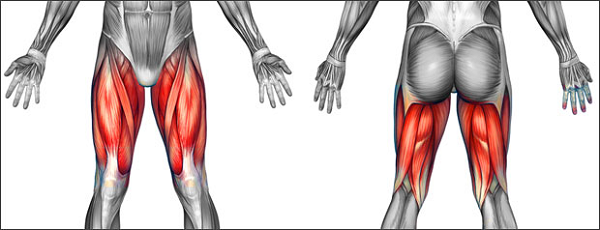
How to manage back thigh muscle strain
Individuals with this condition need to seek early management in order to prevent complications. If you ignore treatment, the tightness in the hamstring (a specific group of muscles located at the back of your thigh) may worsen and you may have recurrent muscle strains.
Having complications will also imply that you may be unable to return to your previous work activities.
Physiotherapists are experts in the health multidisciplinary team to assist you in your rehabilitation. Rehabilitation is tailor-made and based on the findings of your assessment and your functional goals.
The initial stage of your injury may require the need to control the swelling - if present - and decrease pain in the affected muscles – hamstrings.
You will need to limit activities which require you to move around too much or move around with assistance of assistive devices such as crutches, so that you do not place any stress on the back-thigh muscles. Without offering adequate rest for the condition, the extent of damage or injury may become worse.
You will also be required to put an ice pack in a damp towel and place it on the affected area for 15 – 20 minutes every 2-3 hours throughout the day. You may apply bandage to the affected thigh to control the swelling.
Elevating your thigh muscles above the level of the heart will also assist in reducing the swelling. Eventually you may need to adjust your daily routine for a while to avoid worsening the swelling.
Restore muscle length
Some individuals realise that their back thigh muscles are tight and straightening the knee becomes quite painful. If the tightness is not resolved, it may create more tension/stress in nearby muscles and joints. This eventually results in difficulty in movement.
The tightness in the muscle places more stress on the rope-like cords which attach those muscle to the bone. There is the need to restore the initial length in the thigh muscles by performing flexibility exercises.
Restore muscle strength
An injured muscle may develop weakness due to disuse. There may be continued weakness in the leg, after injury and you may have the feeling that your knee is about to give in or feels unstable anytime you stand or walk.
The injury requires that you strengthen your back-thigh muscles to prevent re-injury and to enhance the way you move. The Physiotherapist would take you through a specified exercise regime to improve the weakness of your muscles.
The intensity of these exercises is usually graduated along with the frequencies to restore strength and stability. The exercises are also targeted to enable you to gradually return to your previous work.
Exercises
• Sit on a bed with both legs stretched out infront of you. Gently point your toes towards the ceiling as you bend to touch your toes or almost touch your toes.
Ensure that the knee of the affected thigh remains on the bed throughout the exercise. Hold the position briefly for 10 – 15 seconds and relax. You may repeat this as often as you can throughout the day.
• You may need to perform this exercise on a staircase or on a stepper or a stable object. When you place your legs on the step, your knee and hip joints should be at right angles.
Gently step up and down the stepper or object with your affected leg and then your unaffected leg, and then step down. You may repeat 10 – 15 times, as often as you can throughout the day.
How to prevent/minimise hamstring strain
• Ensure that you warm-up adequately each time you exercise so that your muscle remain extensible to decrease risk of injury. Your warm-up should last for at least for 20 minutes.
Always begin with slow-paced exercises and end with fast-paced exercises to properly condition your muscles for your training.
• Always remember to perform cool – down exercises each time you are done with your training. These exercises usually entail performing stretches which maintain the flexibility of the muscles to prevent re-injury.
• Having tight back thigh muscles is a risk factor to having this injury. Therefore, it’s expedient to maintain good muscle strength and flexibility to assist you perform movements in a manner which prevents reinjury.
The writer is a Senior Physiotherapist at the 37 Military Hospital
panierus@live.com
